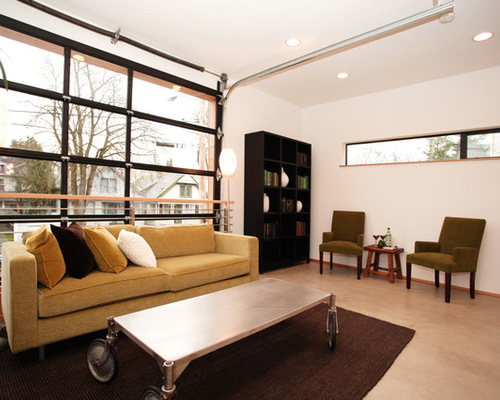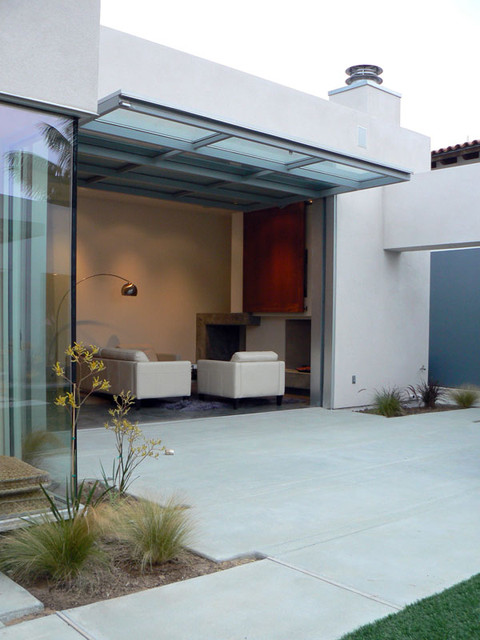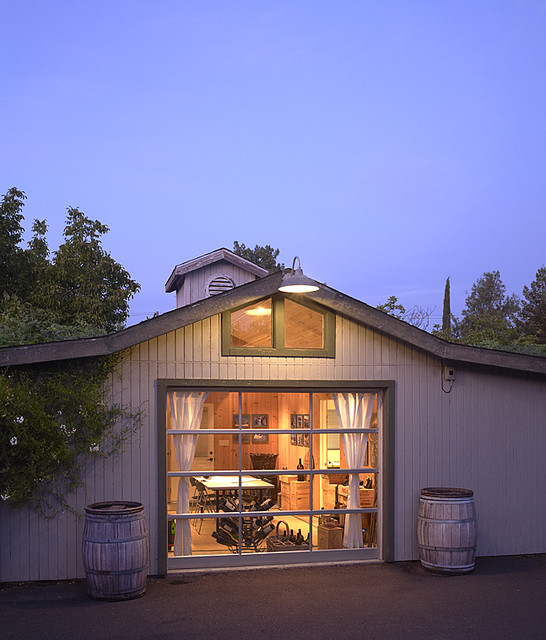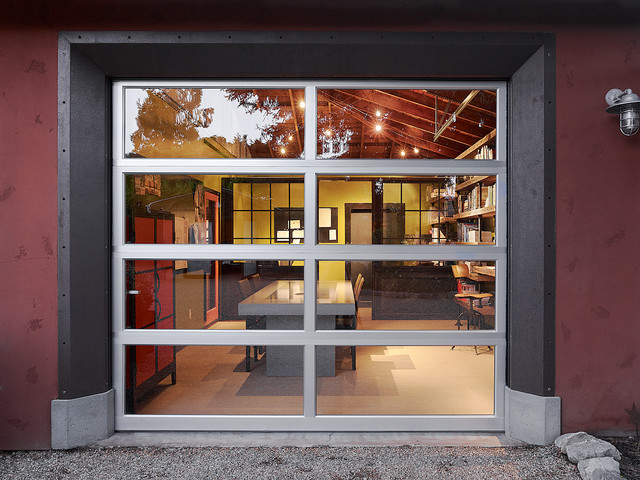
Not Just for Cars: 3 Types of Garage Doors for the Home
Aug 12, 2016
Garage Doors
3 minute read
By Killy Scheer, Houzz
We generally think about garage doors from the outside, but many homeowners have bought a little more space by turning garages into rooms, and a host of creative designers and architects have either transformed existing garages or introduced the garage door aesthetic to traditional rooms. If you’re thinking of taking the plunge and investing in a garage door for a nontraditional use, invest in an insulated door. In addition to keeping the cold out, insulated doors can help mitigate noise.
6 Incredible Garage Conversions
Pros:
- Light
- Space-saving without swings
- Increased value (if you’re converting a garage, updating the door tastefully can boost your home’s value by enhancing curb appeal, for starters. But if you’re insulating the garage, you can bet that you’re adding equity!)
Cons:
- Added expense for nontraditional opening
- Added expense to ensure insulation
- Opportunity for bugs, dust, leaves, etc., to fly in
Single panel up-and-over doors. As the name implies, up-and-over garage doors tilt outward, then lift up. When open, these doors align with the ceiling. While the swing-out feature requires extra space outside for clearance, the panel may provide a little awning above, as in this photo, which is a nice feature for those days when you want sun, but could use a little mitigation.
Double-height spaces benefit tremendously from garage doors; traditional windows are often too low to help with cross breeze in high spaces, and clerestory windows don’t always open, making open-plan upstairs areas a little stuffy. The large scale of the garage doors, combined with the height they reach, makes them a great solution to keep air flowing through an entire house.

Need to Replace or Repair Your Garage Door?
Sectional doors. The most common type of garage door is the sectional, which is constructed of panels that slide up and overhead. Sectional doors have two distinct advantages over more monolithic single-panel doors: they don’t require any space outside the garage to open and each panel has its own connection to the door track, increasing sturdiness.
Dueling sectional garage doors open this space up tremendously and would foster an impressive cross breeze.
Glass doors. Glass garage doors have become much more common in residential applications. Typically, the doors are constructed in a paneled design with a grid pattern separating the panes of glass. The grids can be fabricated from wood or metal, similar to window frames. The glass on these doors is designed to be strong and tamper-resistant, with several opacity options from which to choose, including clear, frosted and tinted colors. There are also solar treatments that encourage thermal heat gain.
Glass is the preferred material for those converting garages into rooms or studios, and certainly for those installing garage doors in unconventional spaces because of their clean, modern aesthetic and the fact that they act as an enormous window when closed, bringing in all kinds of natural light.
Find Amarr in Houzz’s Directory of Garage Door Manufacturers
While garage doors are great for looking out from within, don’t forget the view from outside looking in! How cozy does this wine country dining room and kitchen look?
This Yountville, Calif., architecture home office is sure to inspire almost anyone.
How would you use a garage door in your home? Let us know in the comments below!














